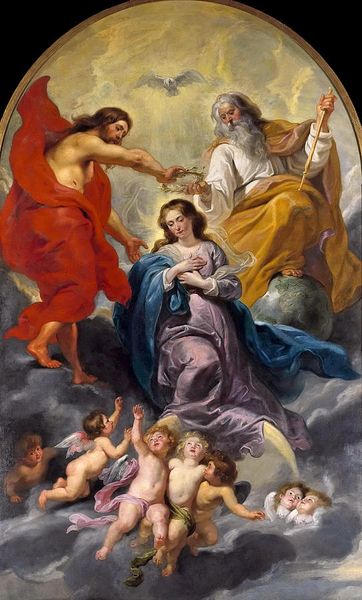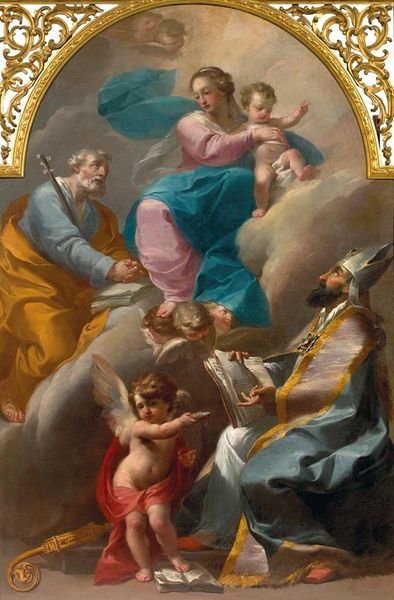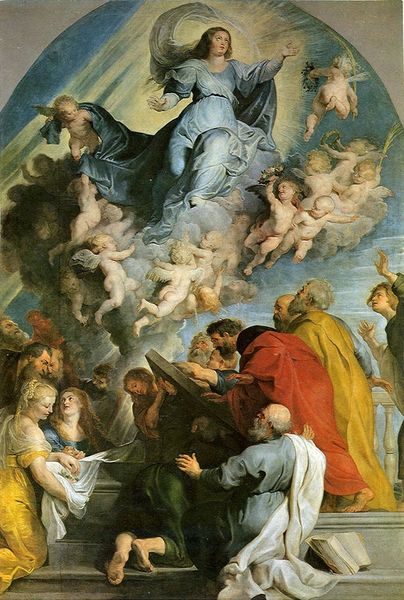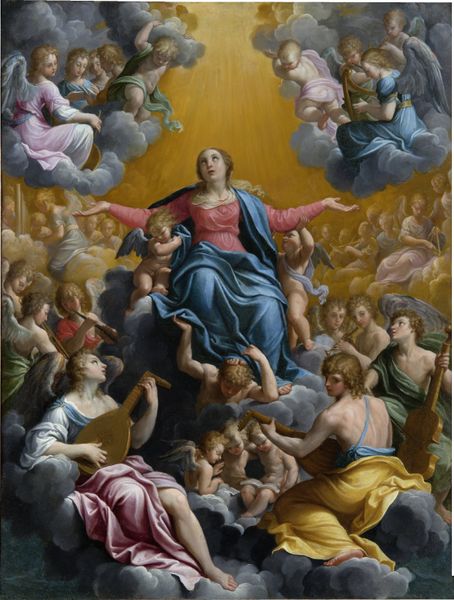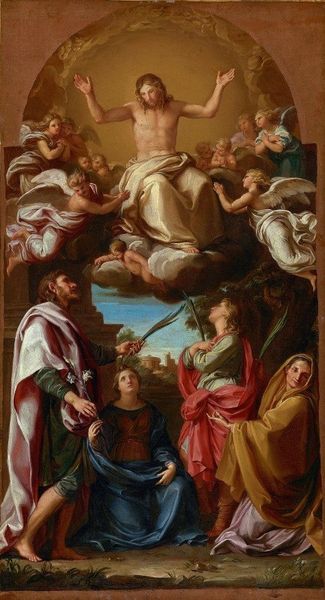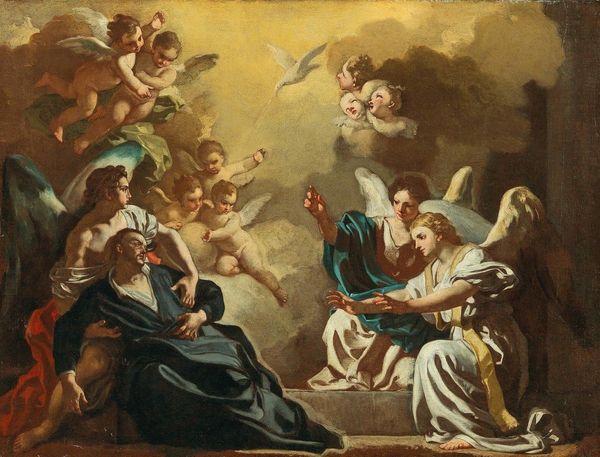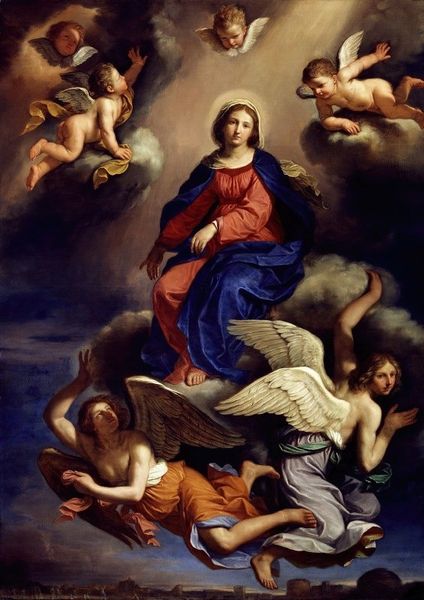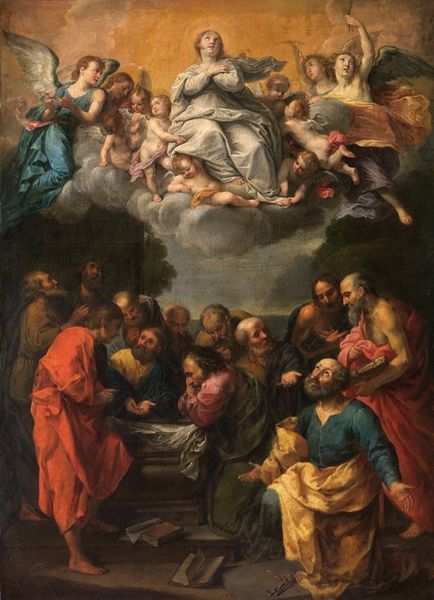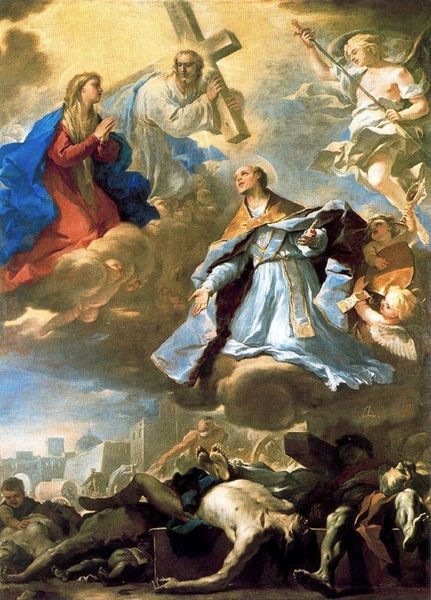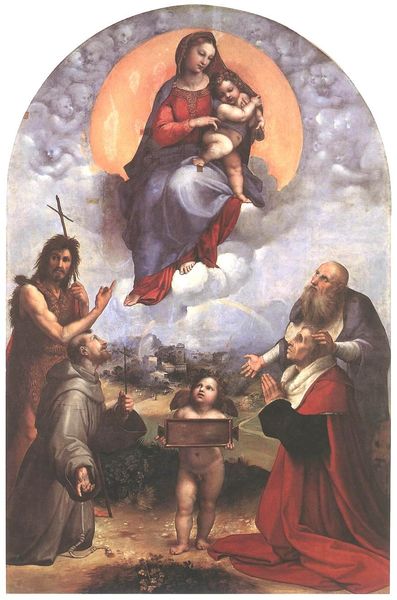
painting, oil-paint, canvas
#
portrait
#
baroque
#
painting
#
oil-paint
#
figuration
#
oil painting
#
canvas
#
history-painting
#
italian-renaissance
Dimensions: 110 cm (height) x 42 cm (width) (Netto)
Curator: Standing before us is "Mary Introducing St. Catherine of Siena to Christ," an oil on canvas attributed to Luigi Garzi, created sometime between 1653 and 1721. Quite the visual tapestry, wouldn't you agree? Editor: It really is. It’s dizzying in the best way – a vortex of clouds, bodies, and devotional intensity. The palette feels very celestial and, at the same time, so human, very intimate. What grabs you first? Curator: It’s that implied narrative. Mary’s gently presenting Catherine to Christ… an almost motherly act of faith made manifest. Saint Catherine embodies the striving soul, I imagine. The composition is Baroque splendor, yet I see the roots of the Italian Renaissance in how balanced the drama seems. Garzi somehow blends dynamism with an undercurrent of peace. Editor: Absolutely, but it's interesting how the dynamism and visual complexity almost work to overwhelm the senses before clarity emerges from a symbol-dense atmosphere. Consider the symbolic importance of gestures - like the welcoming extension of Christ's arm, or how the positioning of Mary in relation to St. Catherine implies intercession, patronage, and sacred power. I see how Italian Renaissance ideals get reinterpreted through a specifically Baroque vocabulary. Curator: Tell me more about this symbolic vocabulary? Editor: Take the putti, for example. You find them everywhere within the composition. Those winged cherubs signify divine love but here they're also strategically placed to guide your eyes through these separate, but interconnected, heavenly spaces. They bridge realms. They also signal what’s significant and what demands closer observation. Plus the luminosity here is a statement – about accessing divine knowledge perhaps, or the soul’s inherent capacity for transcendence. What do you think, is that reaching too far? Curator: No, not at all. The whole Baroque aesthetic hinged on capturing transcendence, so it’s natural to search for layers of meaning here. Maybe Garzi wasn’t simply painting a religious scene but trying to capture something closer to the experience of revelation itself. What a beautiful endeavor to take on! Editor: It's one that he's certainly invested with an intense awareness of its historical and symbolic heritage, while at the same time capturing its transcendent possibilities. What a rich combination.
Comments
No comments
Be the first to comment and join the conversation on the ultimate creative platform.
